Interview: Spencer Tunick
Liberating the nude condition on an epic scale with stunning photography


Photographer Spencer Tunick fills landscapes and public places with the naked body. Some of his images offer the view of one nude figure, while others reveal epic scenes of mass mobs in historic and iconic locations. From thousands of people lined up in a record-breaking installation in Cleveland, Ohio to hundreds covered head to toe in body paint in an installation referencing the BP oil spill in the Gulf of Mexico, each of his images explores the contrasts and conflicts between nature and culture.
We met up with Tunick at his book launch at San Miguel de Allende’s Hotel Matilda during the SMART Festival, where he was showing work and celebrating the launch of his new self-published, limited edition book, “European Installations.” The New York-born photographer took time out to tell us more about his connection with the quaint Mexican town, Europe’s penchant for celebrating the body and his attempt to gather nudes in South Korea.
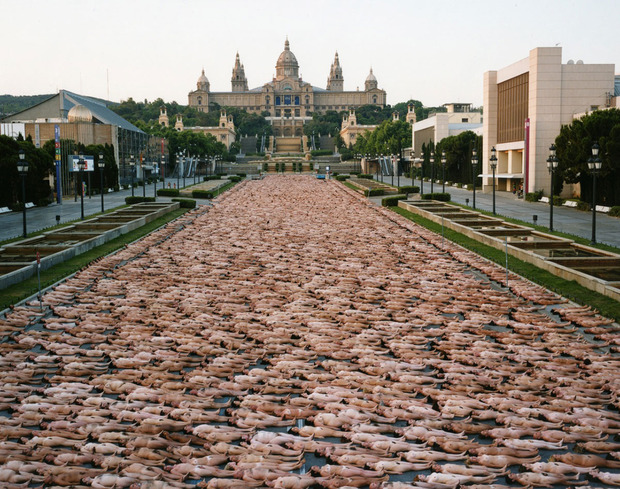
What was your original connection with Hotel Matilda and Harold Spook Stream? How did this collaboration come about?
Spook was one of three collectors to help fund my Zcalo installation. Spook Stream bought the work up front, sight-unseen and those finances were used to help fund the project including help from other collectors, the government, UNAM and the Museum of Contemporary Art. Everyone got together to help put the project together financially. Spook was very generous to do that. Then he was opening up Hotel Matilda and wanted to wallpaper part of the second floor bar area with my works. A year or two later friends who come down here to vacation a lot askedcome and visit them in San Miguel. They told me I would love this town, the mix between artists and collectors and locals. We came and stayed here at Matilda and fell in love with San Miguel.

What kept bringing you back to San Miguel?
I met a women named Klaudia Oliver who asked me to be a judge at the next Guanajuato International Film Festival. That time I stayed at Spooks house was a judge at the festival along with Larry Clark and Paul Schrader. When I was here I made works as well on the streets and the Guanajuato International Film Festival filmed me. I was here with my wife and two kids. We fell in love with the town again. Weve been here most of every summer since.
How did you become part of the SMART Festival and decide to have your book launch here?
I have been included in the last two and I keep on making new works when I am down here. I cant be on vacation for a month and a half, even though it feels like vacation. If I see a background, if I see something that sparks an idea, I have to integrate the naked body into it. So I have been making works in San Miguel every summer.The SMART Festival has been a whirlwind of activities. It is interesting seeing art in a boutique setting and how people interact with art in public spaces.
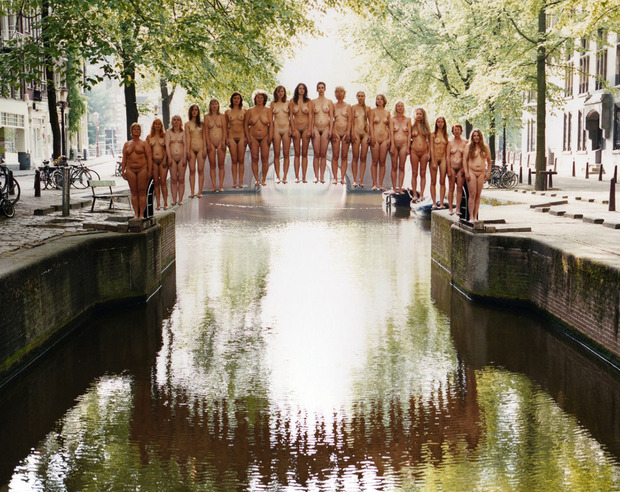
Why does this book focus on the works you did in Europe?
This book celebrates my safe haven for the body right now. Europe, South America, and Mexico have been very open. For this book I wanted to keep the concept European. Europe is so important to me. I was being arrested by the police a lot on New York even though it was legal to work with the body on the street. If you apply for a permit, they have to give it to you. The mayor did not like the law, but instead of changing the law, he decided to just arrest me hoping I would disappear. But I kept on working and kept on making my work. The cops arrested me once more, threw me in jail. Then I sued the city and the police commissioner. The case went up to the US Supreme Court and I won. Then when I applied for my next permit, the city turned me down. So I said, the hell with this, I am going to take that invitation to make a work at the Basel Art Fair, as one of the commissioned artists in Switzerland. Since then, governments have not been arresting me in Europe. They have been celebrating the body. I have been given the time to make my work without the threat of arrest.
How did nudes become your medium and the main focus of all of the images you create?
I often liked when artists worked with nudes, who didn’t always do nude work. Yayoi Kusama, Carolee Schneemann, Rebecca Horn. I always loved their nude work and wished there was more. I thought, why not do what I really love? Why vary from something when you can just totally obsess in it? I am very much interested in the body and how it relates to public space, the interaction between the participatory element of my work and the public that views it.
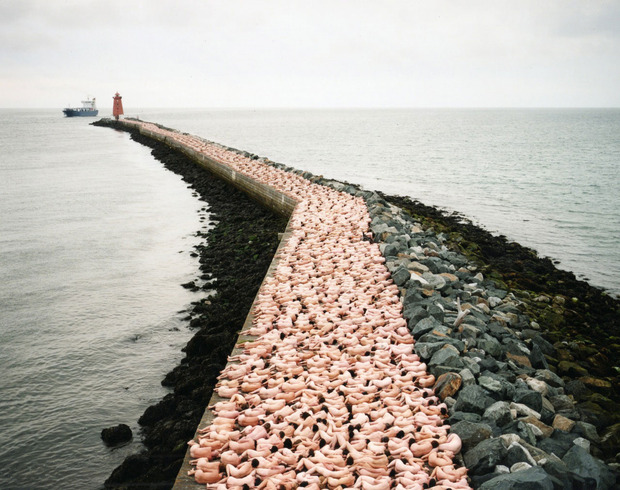
Tell us about the process you went through to print the book?
I wanted to be my own publisher. It is very difficult to find low pricing in the United States for printing quality art books. Minneapolis is a good place to get a decent deal on printing. Shapco prints for a lot of the major museums and also for Printed Matter, the artist bookstore in New York City. They recommended Shapco to me. In the last 10 years I have been approached by many publishers, but I always turned them down because I wanted to do it myself. I love the idea of a book that stays within the artists hands.
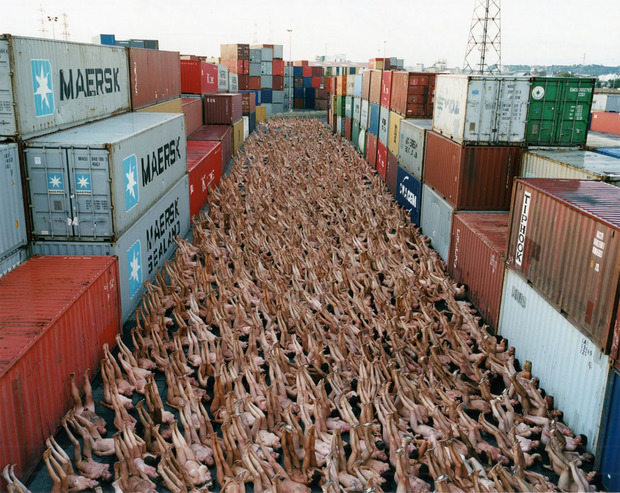
Is continuing with epic works and large numbers of people where you are heading?
Not many institutions have the finances to orchestrate a big installation. Thats the hardest part. If I went to Poland or Moscow right now to do a work, I could get 10,000 people, but it’s very hard for the institutions to get the okay from the government and to raise the funds to do it. Like anything, it’s finding finances to get these things done.
Then when you go back and work with one person, how do the large and small scale works inform each other?
With one person I get to have a conversation. That is always wonderful, to make a work and have breakfast with that person afterwards. Friendships have come from that.

In the book there are several images where the nude bodies are painted. What is that process?
I am starting to paint people and still keep it a little bit more serious and not get too comical with it. I was looking to do it. I was thinking about it for a long time. I didn’t know how to get the right paint. I started looking in Europe for body-paint companies. I was sent a few samples. Then a friend of mine told me the largest US body-paint company is 10 minutes away from my house in New York. They are called Mehron, I worked with the chemist there. He made a special body make-up just for me. It is in a four ounce container and will cover an entire body. It dries quickly and is a bit water resistant in case it rains, but you still can take it off in the shower.
Have you worked in Asia?
There was a museum named Platoon in South Korea that was going to be my first work in Asia. Someone at the museum wanted to connect it to a revolt, something political on a specific day in the square. I always say, dont do that. My work is political enough. When you try to associate it with something political you might not get permission and thats exactly what happened. The government didnt give them permission to do it. I was really disappointed because it would have been fantastic, for something beautiful like that to happen in South Korea. It would have been incredible. It is very difficult to get permission for the body in public space there.
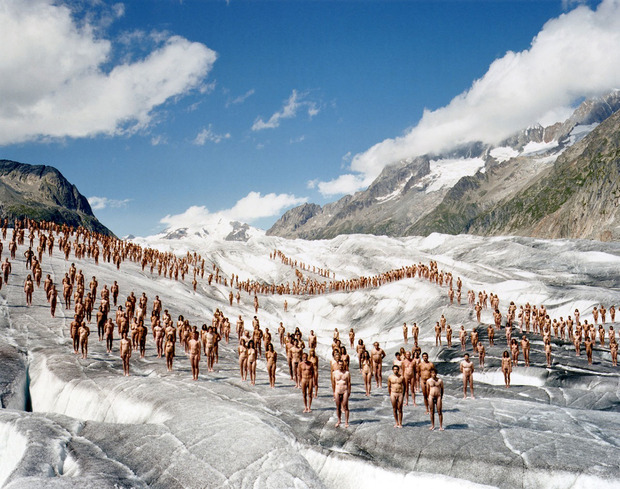
1,400 limited-edition prints of European Installations by Spencer Tunick are available through his site for $80.
Images by Spencer Tunick, portrait of Tunick by Heidy Elainne












